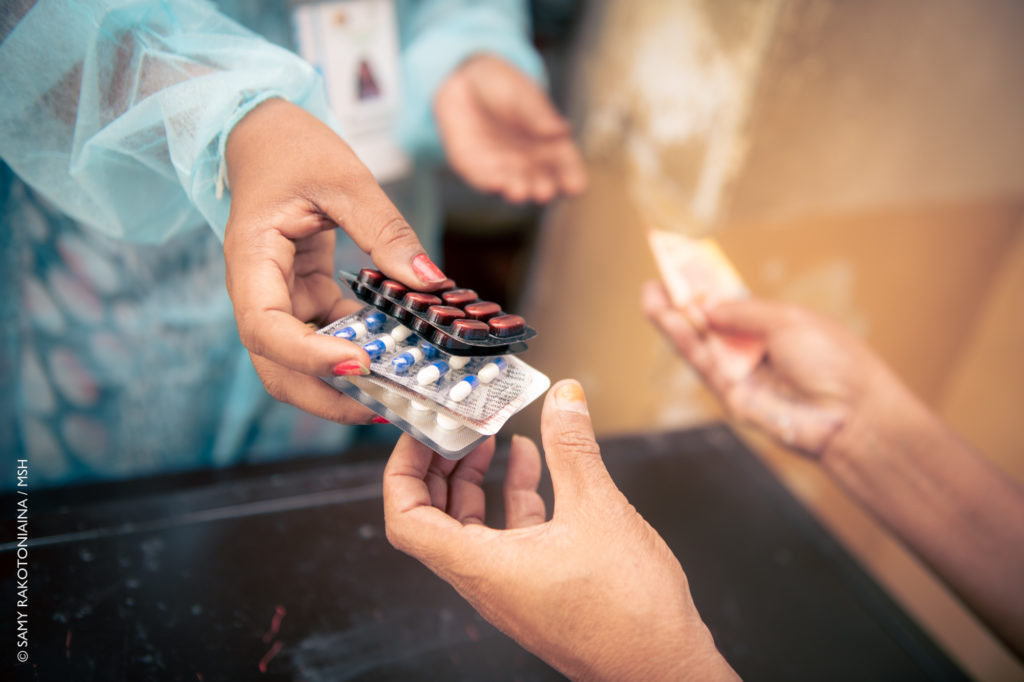Antibiotic use in Uganda is high: action is needed
Antibiotic use in Uganda is high: action is needed
Co-authored by Freddy Eric Kitutu of Uganda’s Makerere University and MSH’s Reuben Kiggundu, country project director of the USAID/Medicines Technologies and Pharmaceutical Services (MTaPS) Program
This article first appeared in The Conversation.
Even before the COVID crisis, excessive use and misuse of lifesaving antibiotics had contributed to the emergence of resistant strains of disease-causing organisms. This has rendered many of the most powerful treatments in modern medicine ineffective.
It’s estimated that drug-resistant infections caused more than 1.2 million deaths in 2019. That is more than malaria and AIDS combined. And resistance contributed to about 5 million additional deaths.
There’s some evidence that the COVID-19 pandemic made matters worse.
COVID-19 is caused by a virus. And viruses are not treated with antibiotics. But early treatment guidelines for COVID-19 assumed that patients admitted to hospitals would develop bacterial superinfections that required antibiotics. The sheer volume of people who were sick with respiratory infections also seemed to encourage additional use of antimicrobial drugs.
Antimicrobials are drugs that treat bacterial, viral or other microbial infections. Antimicrobial resistance, the drop in effectiveness of this broader class of drugs, was already a rising threat to global public health before December 2019.
In general, sub-Saharan Africa suffers from the highest rate of drug resistance-related deaths. But the prevalence varies by country. In our recent research we set out to document the magnitude of antimicrobial use, a known driver of antimicrobial resistance, in selected healthcare facilities in Uganda.
We found a high use of antibiotics across all surveyed health facilities. And compliance to Uganda’s clinical guidelines among healthcare workers was low. Also, men were more likely to be on antibiotics than women. In addition, antibiotic use was two times higher in public health facilities than in the private sector. But this could be attributed to the higher proportion of public healthcare facilities in our study sample.
Our results highlight areas for intervention to address antimicrobial resistance. These findings also provide a baseline against which we can compare the impact of such interventions.
Trends in antibiotic use
We surveyed antibiotic use in 13 hospitals in Uganda. Our analysis included nearly 1,100 patients and was done between December 2020 and April 2021.
Nearly three-quarters of all patients in our study were taking at least one antibiotic. This is high and could indicate overuse, some of which may be unnecessary. In addition less than 30% of the antibiotic prescriptions complied with Uganda’s clinical guidelines for choice of drugs.
Ceftriaxone is a drug used to manage a wide range of infections. It was among the most prescribed antimicrobials. But it’s not recommended for first-line use. A possible explanation for this is convenience and ease of its use as compared to the current first-line medicines.
In a first, we looked at differences in antibiotic use among males and females as a preliminary indication of gender differences in adequate access to antibiotics. We found that men had 15% greater odds of antibiotic use. Reasons for this observation were not obvious. But other studies have attributed it to differences in access to healthcare between men and women. In those studies, boys were more likely to take antimicrobials for longer periods and to complete the regimen.
We also found antibiotic use substantially higher in public and nonprofit hospital settings compared with private ones. This contradicts our expectations that the profit motive typically drives the overuse of antibiotics in private hospitals and should be examined further.
We are concerned about the observed levels of use of antibiotics in Uganda. Efforts to examine whether this use is appropriate or necessary or not are compromised by inadequate patient record systems and diagnostic capacity. Proper and complete patient records and diagnostic capacity are the minimum requirements for the desired antimicrobial consumption and use surveillance. And for better quality of healthcare in these healthcare facilities.
On a positive note, Uganda has been strengthening the antibiotic consumption and use surveillance system and health facility diagnostic capacity at higher levels. Efforts are being made to address policy gaps, and training of healthcare workers at both undergraduate and graduate levels.
Our findings should be used to accelerate implementation of ongoing strategies to reduce misuse of medicines, and guide research in other sub-Saharan countries.
Recommendations
What’s needed next are sustained investments from government and development partners. Here are a few places to start:
– Invest in new, better, and easier-to-administer single-dose antibiotics that target a narrow range of bacteria, known as narrow spectrum antibiotics. So-called broad spectrum antibiotics are associated with more resistance. This will enable health workers to treat infections better and comply with guidelines.
– Improve laboratory infrastructure and technologies. Clinicians must be able to identify the microorganism that caused the infection, so they can choose the appropriate antimicrobial to administer. Current capacity for diagnosing bacterial infections in Uganda is minimal.
– Strengthen the health workforce with more staff and training in infection prevention and control. Better infection control will reduce the incidence of bacterial infections, hence reduced need for antibiotic use.
– Implement and enforce policies on the use of antibiotics including proper patient record keeping which can act as an indirect force to improve quality of healthcare. Lessons for proper patient record systems use can be borrowed from the health insurance industry.
Uganda is only one country that needs to improve its stewardship of antimicrobial resistance. Without a coordinated global response, drug-resistant infections will cost the global economy US$100 trillion in economic output by 2050, and lead to more disease and mortality than all noncommunicable diseases combined.
